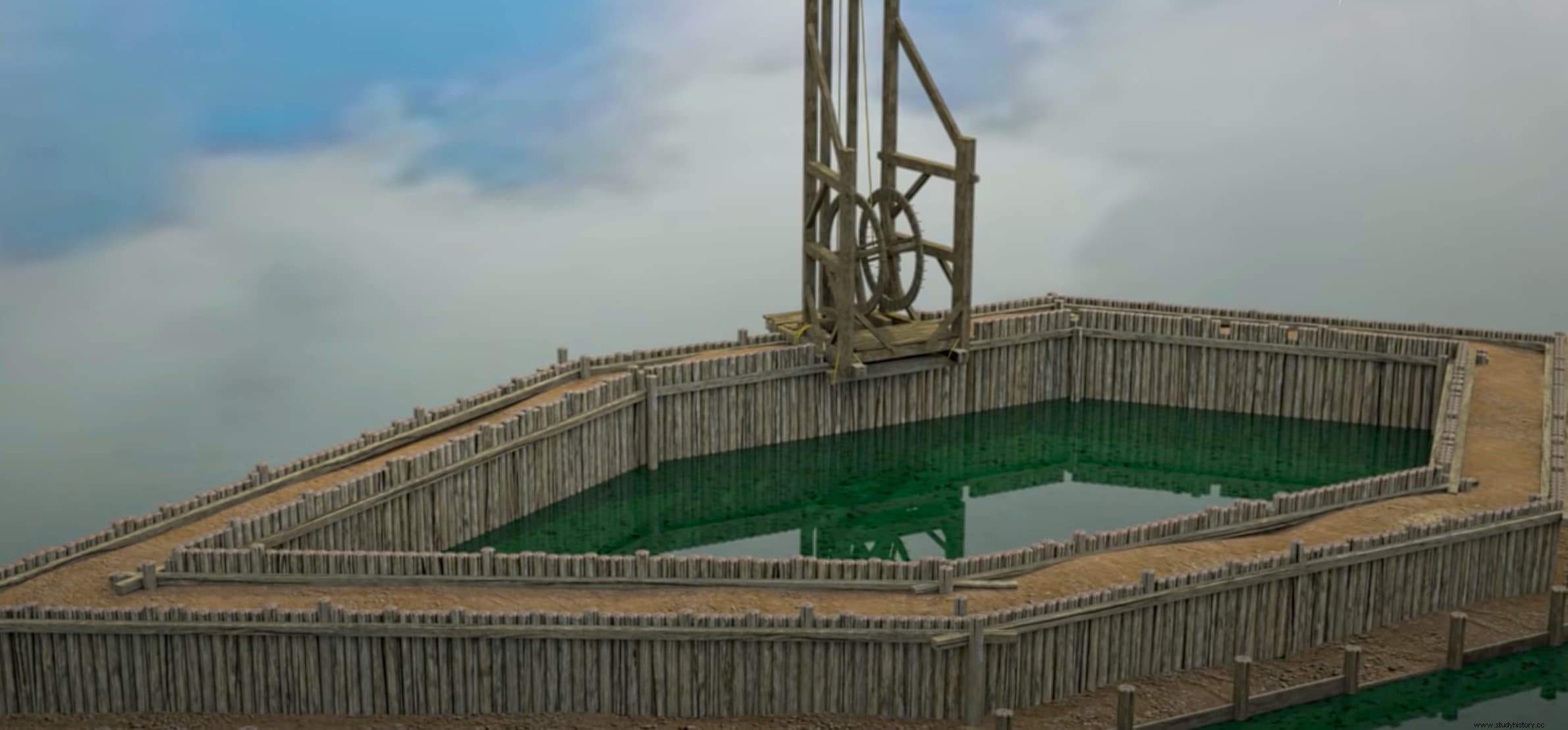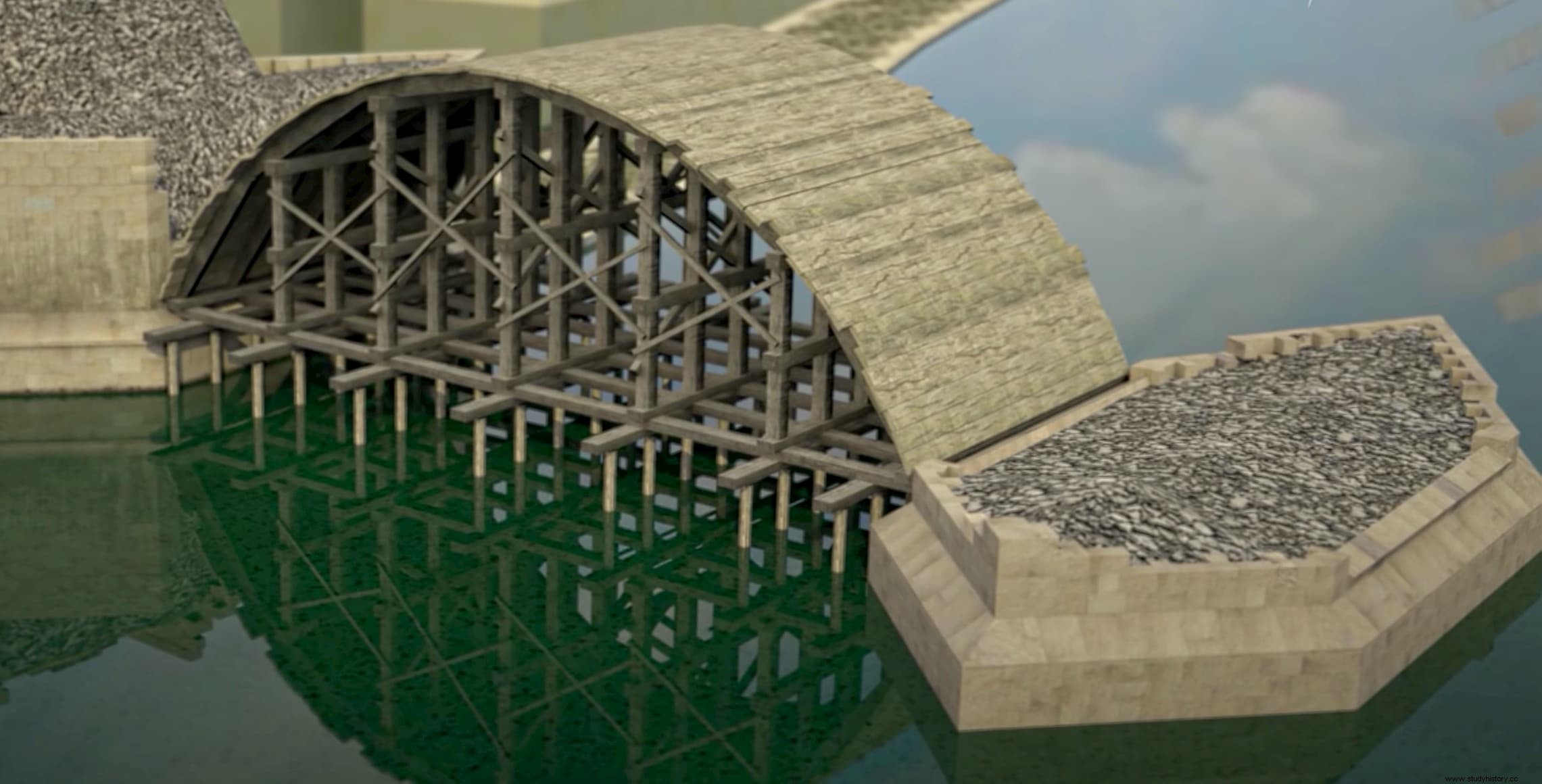Building a bridge over water is a daunting task, and despite many technological advances, the fundamentals have not changed since ancient times.
A cofferdam (wooden formwork) is first built in the river bed and the water inside this enclosed structure is pumped out, exposing the muddy bottom. On this ground the pillars of the bridge are erected.

During the Middle Ages, cofferdams were built using several rows of logs stuck in the mud. They were then made airtight using mud reinforced with sand. The water was then pumped up from the bottom by a water wheel.
Most likely, the subsoil was reinforced with wooden piles driven with a pile driver. Above these, a wooden foundation grid composed of oak beams and planks was placed. This grid was fixed with large round stones, which were interconnected by wrought iron bars.
Once the foundation was prepared, the masonry of the pillar could begin. To build the arches, wooden falsework was erected and precision-cut sandstone or granite blocks were placed on top of them.

Once the keystone was in place, the falsework was removed and the arch was held together by its own weight. The arches were reinforced by putting several layers of stones on top of them up to the level of the bridge floor. Finally, a hard rock pavement was laid.
This process has been beautifully recreated in a 3D animation by Praha Archeologicka, a Prague-based project of the Institute of Archeology of the Czech Academy of Sciences (CAS) and the National Heritage Institute. The example chosen in this animation is an actual medieval bridge, the Charles Bridge, which spans the Vltava River in Prague.
Construction of the Charles Bridge began in 1357, under the auspices of King Charles IV, but was not completed until the early 15th century. It has 16 arches and 15 pillars, 512 meters long and almost 10 meters wide. The balustrade is decorated with 30 statues representing various saints and patrons, although these were erected much later, between 1683 and 1714. To preserve these statues, they were replaced by replicas during the 1960s. The originals are in the Museum Prague National.
Until the middle of the 19th century, the Charles Bridge was the only crossing of the Vltava River, which made it an important connection between Prague Castle and the Old Town of the city and the adjacent areas.
The bridge suffered several disasters throughout its six hundred years of existence. Flood damage was frequent, the first of which occurred just 30 years after the bridge was completed. In 1496, one of the arches collapsed when water damaged the supporting pillars.

During the great flood of 1890 a staggering amount of rafts, logs and other floating debris stuck to the bridge and broke three arches and two piers. Wars also caused significant damage, especially during the end of the Thirty Years' War when some of the heaviest fighting took place just over the bridge. During the fighting, the towers were badly damaged and the remains of almost all the gothic decorations had to be removed afterwards.
The bridge escaped destruction during World War II, at the end of which the damage it had sustained was repaired and automobile traffic was prohibited. Today it is one of the main attractions of Prague.
This article was published in Amusing Planet. Translated with permission.
